This is the headstock of a DeArmond five string bass. Its owner thought it was ugly and just did not live up to the greatly modified nature of the rest of the instrument. I was the one who modified it to begin with, by making it fret-less, and installing all high quality hardware and electronics in black. You can read about that here.

Of course I needed to know just what he wanted it to look like, not that I can't come up with a good design, but it is his bass, not mine. I would extend you the same courtesy too of course. The design process can take considerable time, and time is money, so it helps if the customer can do a portion of it themselves. Accurate measurements are not so important, I can refine dimensions from rough sketches and manipulated photographs, which is exactly how we came up with the final design.
He erased out some portions of the original version of the above photograph and sent it to me via email, and asked what I thought. I manipulated the same image and sent a few different versions back. We went back and forth with it refining the details, until he had what we both agreed was "The killer design". Here is the refined picture:
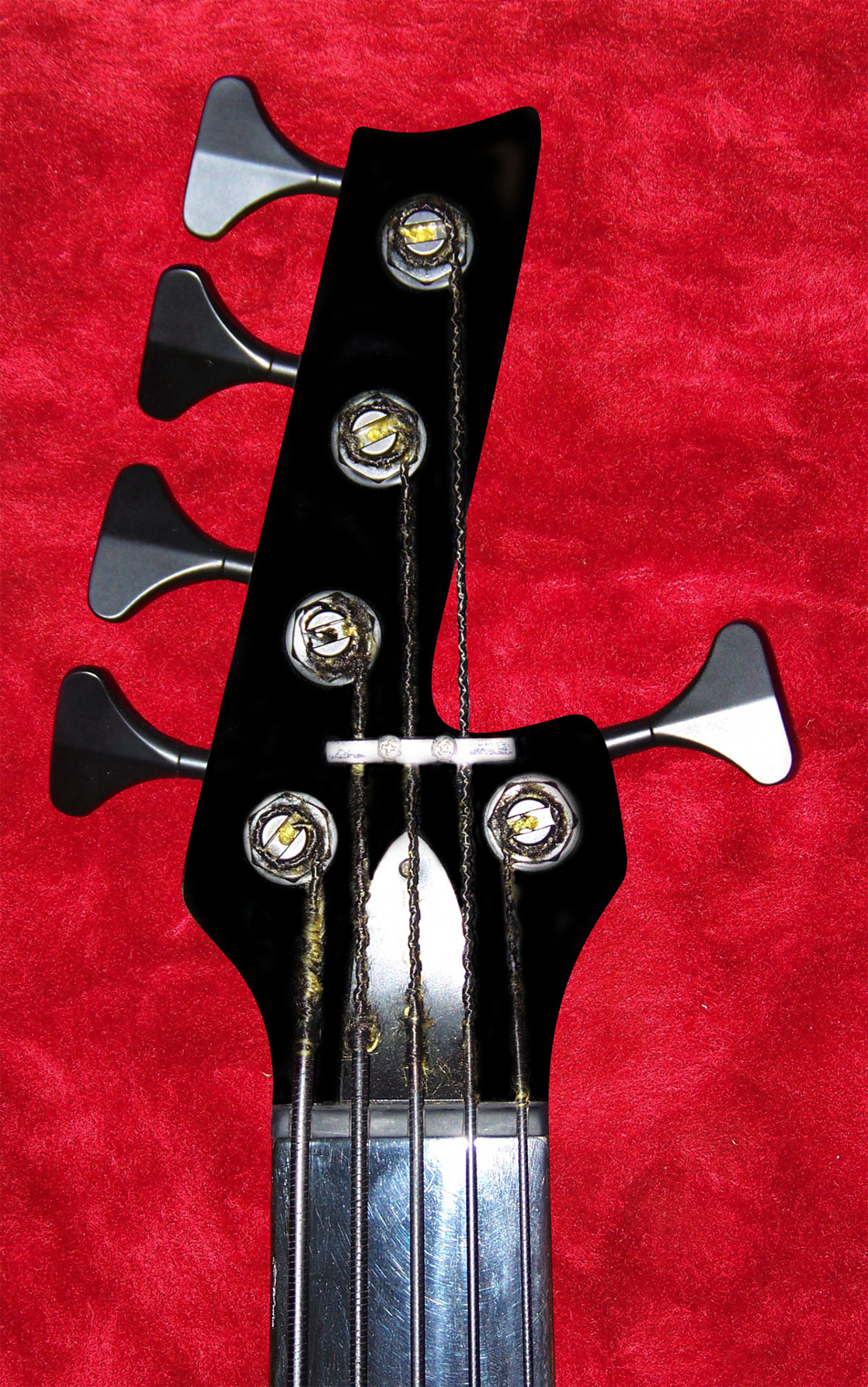
I put masking tape on the headstock, and laid out the design on it.

I cut the unwanted portion away using a scroll saw, and sent him an email with the text "NO TURNING BACK NOW!" and this picture:
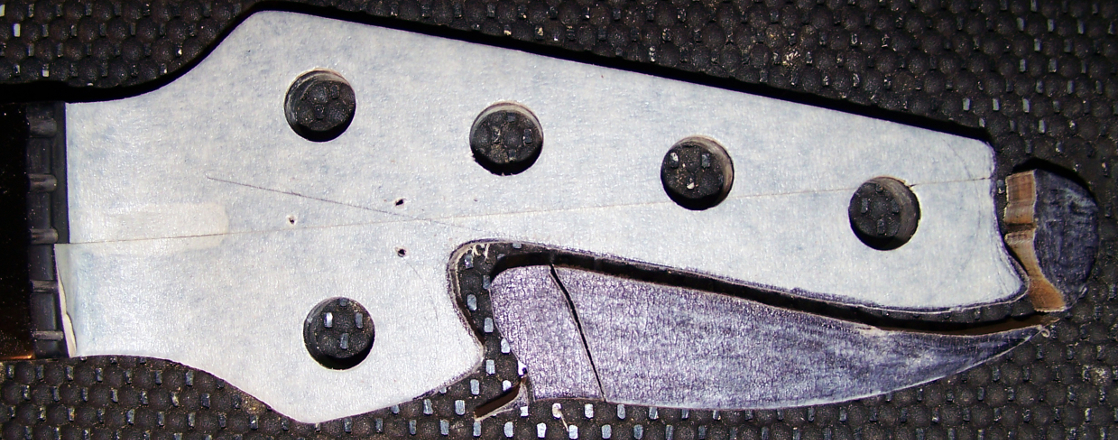
most often you see either the whole neck painted, or just the face, because it is hard to make a good looking, clean transition between the painted and natural portions, and it is a lot of work that is easy to mess up. The back side did not lend itself to a sharp transition, I had to refine it just a little. Here is what I had to work with:

I sanded the finish off, filled the bottom tuner screw hole, refined the contours, smoothed everything nice and fine, and finished it in black. Of course I had to do a little sanding around the transition, to get rid of the lacquer that crept under the masking tape in a few spots, and re-oil the bare wood. I have yet to find flaw free masking tape.
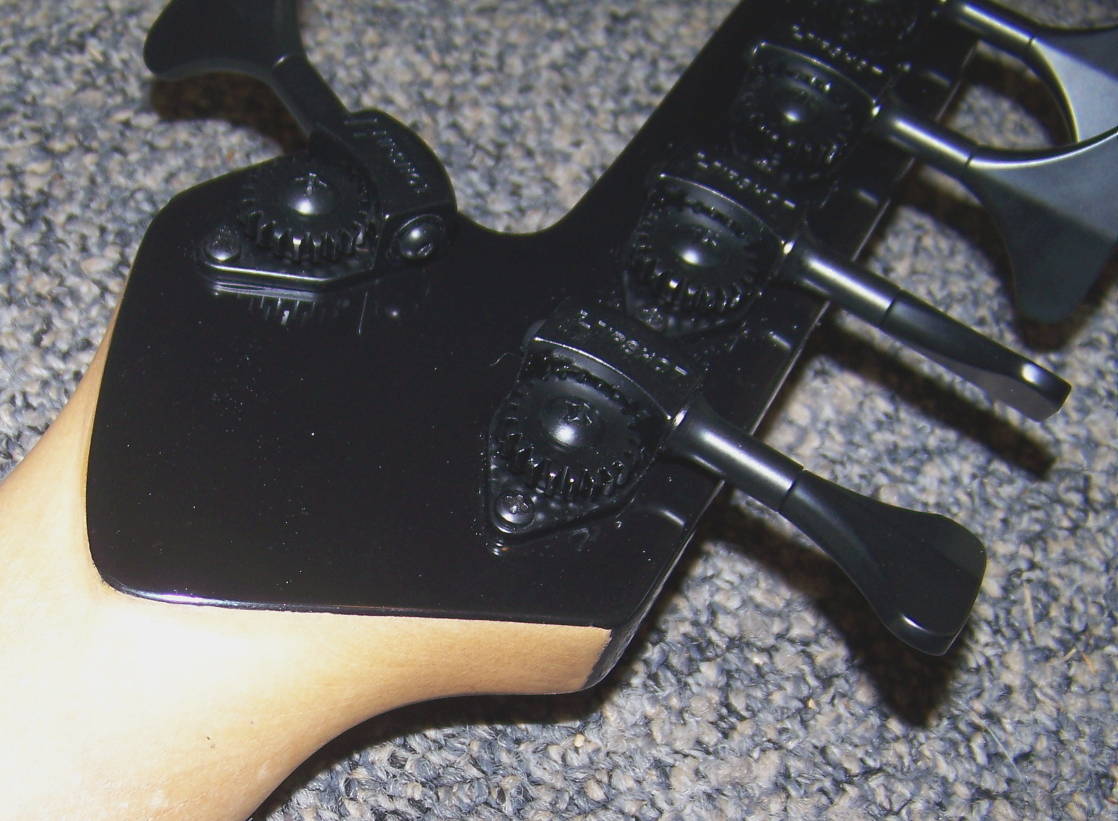
I sanded and polished it before the lacquer had cured completely, which is not necessarily a problem, unless it goes untouched until fully cured, but I could not wait to see what it looked like. I assembled the instrument, and hastily took pictures. Then I noticed that handling it caused some scratches and fingerprints in the clear coats; dang! I took the neck off again, waited a few days for the lacquer to cure completely, did some more fine sanding and polishing, and reassembled it. The following pictures were taken before re-polishing:
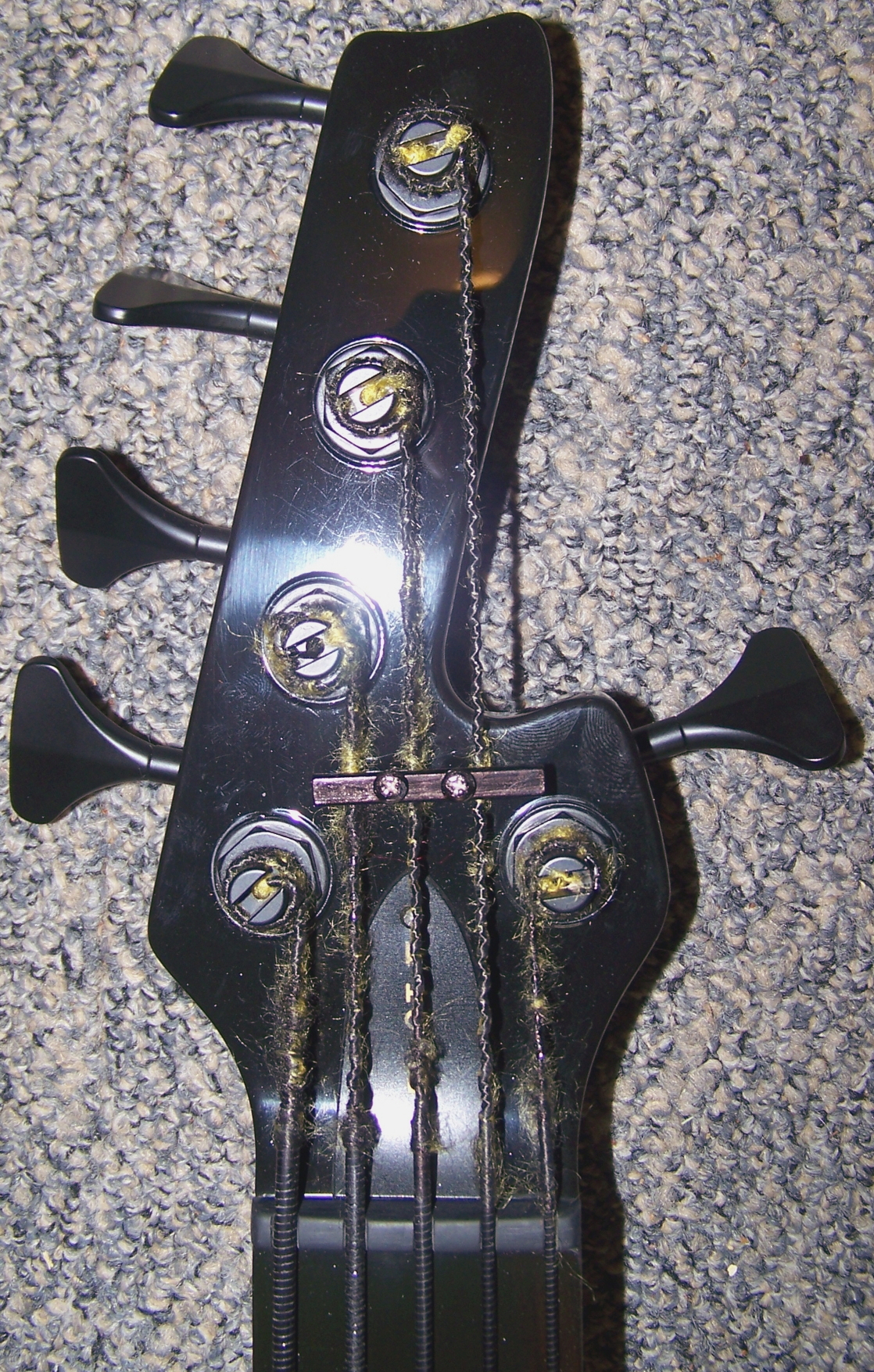
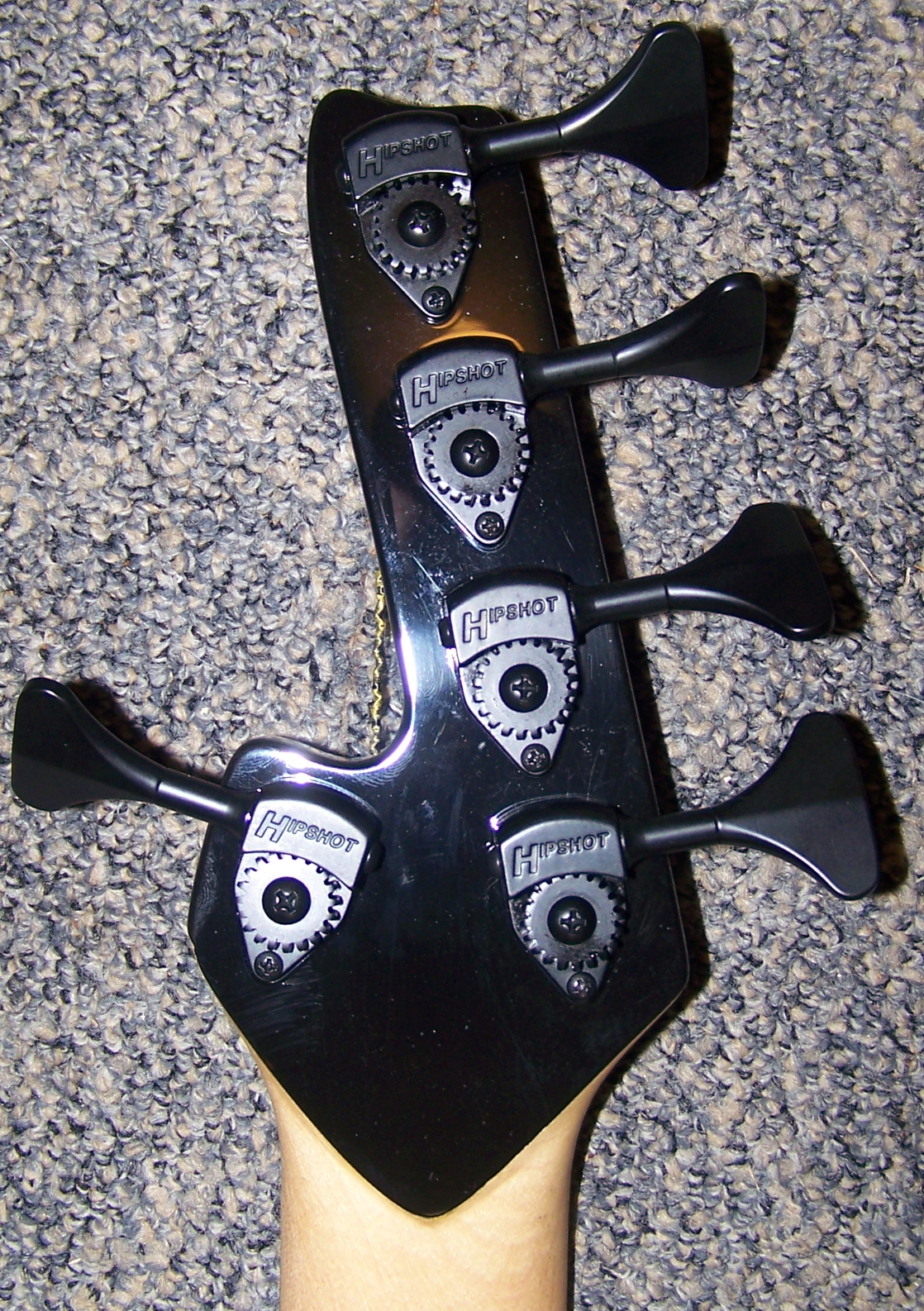
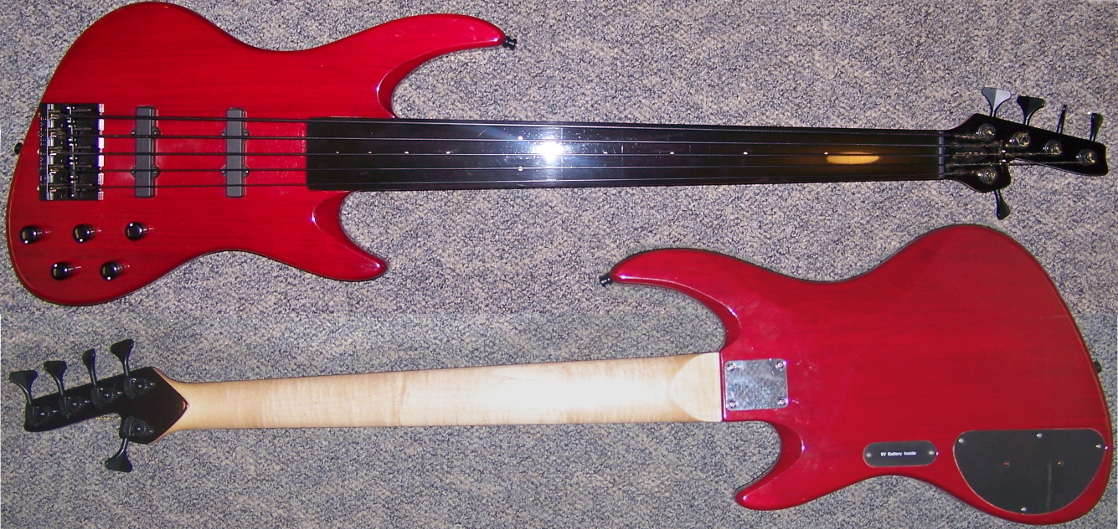
The only thing left to make everything match on this bass would be to replace the chrome string retainer, and the neck mounting screws and plate with black ones. Chrome is incredibly hard to remove, and finishes will not stick well to it either. But it is not really important for now, maybe some other time.